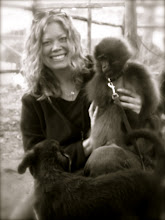Tammy and I awoke Sunday morning and headed down to the thatched hut/reception area/café for breakfast. We had just sat down when Massay, the owner/manager, strolled in looking very dapper in a suit and tie. His morning greeting to me….”your flight will be cancelled. You will come to the wedding with me.” I had been turning down “invitations” from Massay since 15 seconds after meeting him, so my response this time was no different. “Thanks, but no thanks.” Shortly thereafter, Tammy and I left for the airport (approx a 40 minute journey from Lalibela). While standing in line to check-in, I meet Mulugeeta the baggage handler. We then sit down to wait for our flight. But, yep, you guessed it…Massay was right. Our flight was cancelled. So…on our way back into town both Mulugeeta and another airport worker/friend (Ashetu), say “now you can come to the wedding!” At this point, I’m seriously wondering if there is some sort of conspiracy. Is Massay the town godfather???? Well, in an effort to live in the moment…we decide to go to the wedding. The airport driver (who I’m sure is also in on the conspiracy) is told to take us back to Tukul Village, wait for us while we change and then drive us to the wedding. Tammy and I are met outside the wedding venue by the bestman who greets me by name and proceeds to escort us to the equivalent of the head table. Massay is “johnny-on-the-spot” and has cleared out the real guests at the “head table” to make room for Tammy and myself. He also doesn’t look the least bit surprised that we are there! Talk about a surreal experience. Where else in the world can you have a flight cancelled and attend a wedding instead?
So…the next morning, Tammy and I again head to the airport for our rescheduled 9:40am flight only to learn that the flight had been changed to noon. But this time our delay isn’t the least bit frustrating….it’s hilarious. We are now on a first-name basis with all of the airport workers as most were at the wedding. Ashetu and Mulugeeta invite us for shi (tea) and we leave the airport and head to the hut that is only for employees. Sitting outside the airport “shooting the breeze” with the guards, I run into, Zelalum, the bestman from the wedding who proceeds to give me an offer that was hard to refuse. “Stay in Lalibela. I will build you a tukul (traditional house). I will buy you 2 goats. We will have 2 children.” Oh, but it doesn’t stop there. Ashetu joins us and chastises Zelalum. “You are out of line. She is my sister. You must ask my permission first!” Oh my gosh….what an unforgettable weekend. One that happened because Tammy and I chose to live in the moment!

We got an unexpected 3rd night at Tukul Village—courtesy of Ethiopian Airlines. It’s a charming place.

Me and my, um, “friend” Massay

New friends…Mulugeeta and “my brother” Ashetu.

Drinking shi with Mulugeeta and Ashetu. The tree that we were sitting under was brimming with these amazing circular birdhouses.

























